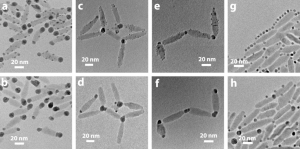Atomic-scale Investigation of Transformations in Nanostructures
Dr. ir. Marijn van Huis
Dr. Marijn van Huis is leading a small research unit devoted to the study of nanomaterials using both experimental and simulation tools. Colloidal heterogeneous nanocrystals (HNCs) are a novel class of materials with outstanding and tunable physical properties. These multi-domain nanocrystals undergo structural transformations upon heating at low temperature, or upon irradiation with light or electrons. It is our goal to identify and develop physical mechanisms that can be employed for the stabilization and manipulation of the nanostructures. For that purpose, in-situ experiments are performed inside the transmission electron microscope (TEM). Through recently developed, ground-breaking MEMS technology, transitions at elevated temperatures can now be imaged at atomic resolution and in real time. In conjunction with the experiments, detailed quantum mechanical and semi-empirical atomistic simulations are conducted to unravel the energetics of the atomic-scale reconstruction mechanisms.

Ripening process in CdSe nanorods covered with Au nanodots. Top: before annealing. Bottom: after annealing.
Key publications
- M.A. van Huis, A. Figuerola, C.M. Fang, A. Béché, H.W. Zandbergen, L. Manna, Nano Letters 11 (2011) 4555–4561, ‘Chemical transformation of Au-tipped CdS nanorods into AuS/Cd core/shell particles by electron beam irradiation’ .
- M.A. van Huis, L.T. Kunneman, K. Overgaag, Q. Xu, G. Pandraud, H.W. Zandbergen, D. Vanmaekelbergh, Nano Letters 8 (2008) 3959-3963, ‘Low-temperature nanocrystal unification through rotations and relaxations probed by in-situ transmission electron microscopy’.
